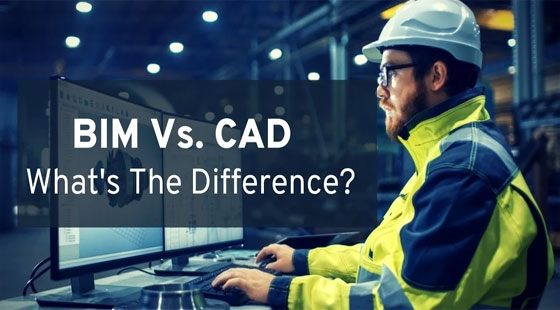What is the Difference Between CAD & BIM
Tweet
For a considerable length of time, item design engineers have utilized PC supported design (CAD) programs —, for example, Autodesk's AutoCAD — to design different parts and segments. These refined projects are fit for making very point by point 2D and 3D models.
With building data modeling (BIM) files becoming popular among driving design firms, many structure item makers reliably pose the inquiry, "Wouldn't i be able to simply change over CAD files to BIM files?" The short answer: No. CAD and BIM file types contrast from various perspectives, making a fruitful transformation almost unimaginable.
So, what's the contrast among CAD and BIM?
About CAD: CAD, or PC supported design, considers design and documentation by means of PC innovation. Design engineers use CAD files for ventures requiring numerous parts and segments to fit unequivocally inside a bigger get together.
About BIM: BIM is another cycle and technique by which a group of draftsmen, specialists and contractual workers work cooperatively to design and construct a business building using a similar database and PC model. This permits the group to dissect and picture design choices some time before a task even gets things started.
CAD versus BIM: CAD is normally utilized for modern design of mechanical and electrical gatherings from planes to iPhones — while BIM is utilized solely in the design and development of business structures, for example, air terminals, office pinnacles or schools and has all the more progressively become the new business standard. These files additionally incorporate significant characteristics to take into consideration virtual crash location and the disclosure of development related issues before kicking things off.
Performance Characteristics: Performance characteristics are basic in guaranteeing part dependability and life span. For instance, regardless of whether a section truly fits in its predetermined area, this is implies nearly nothing if its weight appraisals are excessively feeble for the application or if it's produced using a material that collaborates inadequately with a substance in the end framework.
Performance characteristics take up a great deal of file space and are by and large cleansed during a CAD-to-BIM transformation. An end client taking a gander at such a file would either need to procure a different spec sheet or, almost certain, contact an alternate seller.
Behavior: Building data modeling files are designed to carry on in explicit manners relying upon their exceptional reason and association prerequisites. At the end of the day, various segments of a model "know" what they should do.
A light installation realizes it must be appended to a divider or roof and the electrical framework; a fixture realizes it must be connected to a line; a HVAC conduit realizes it must be introduced inside a divider. As a model is changed, these sorts of segments self-alter in sensible manners.
Interface and Visibility: BIM models are designed for versatility — they can be focused in on and out of, extended, contracted, etc. Presenting a static, high-detail segment like CAD model into a liquid, variable BIM model will consider the CAD picture to be distinguishable as expected, in full detail, at just a single specific zoom level.
Modifying the size of the model a little will bring about obscuring of the CAD segment, while changing the scale all the more definitely can make the picture stain, gotten distorted, show up as a dark splotch, or vanish from the screen. CAD file parts do not have this information when they are fused or changed over to BIM file types, neglecting to self-right as modifications are made to the model.

Gallery
Feel free to contact us for BIM requirements. One of our representative will respond you within 24 Hours. Send us your projects requirement today and grow your project.
Explore More !







